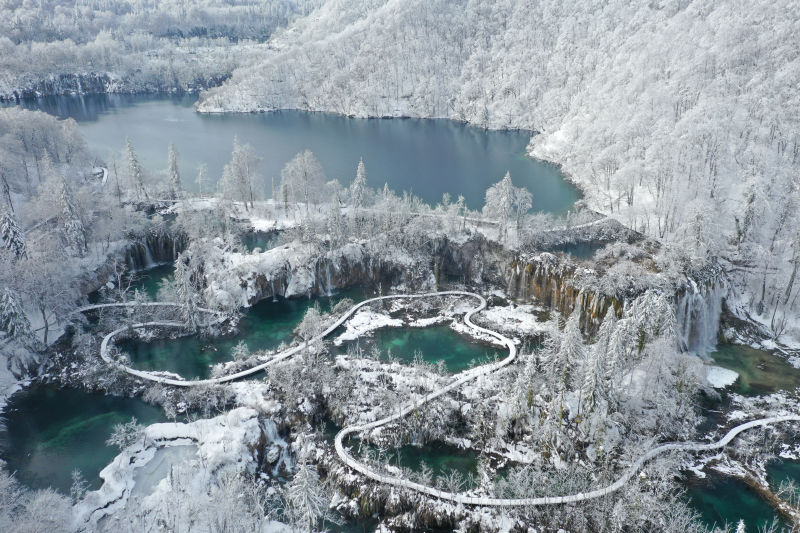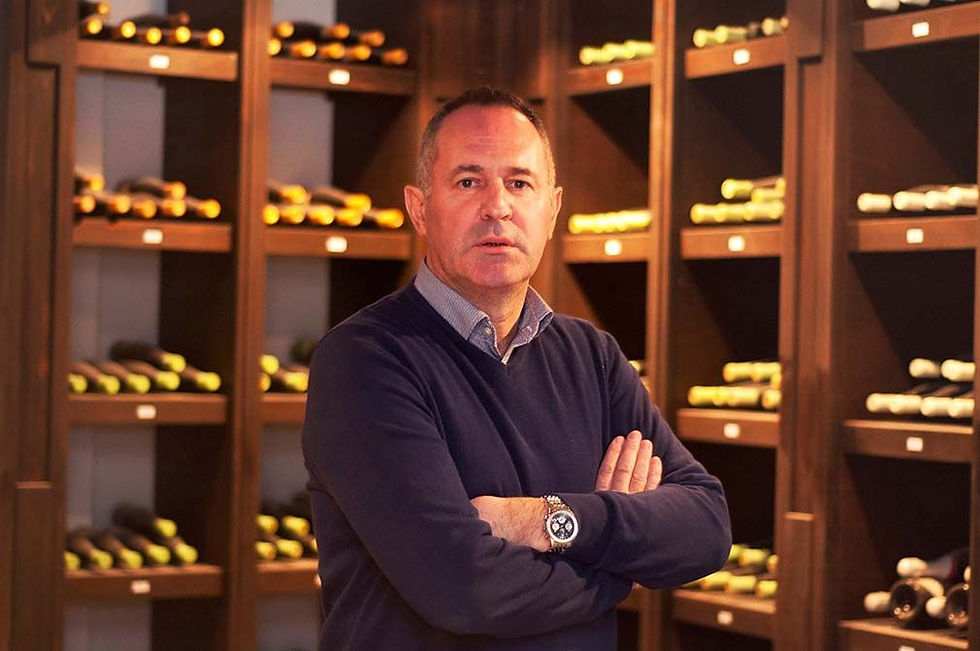Mohamed Lhamrani: I became a master of Moroccan Tajine!
- Vedran Obućina

- Jan 4, 2021
- 7 min read
Updated: Oct 12, 2021

Morocco is a country with a powerful tradition of hospitality, generosity and openness. From the shores of the Atlantic and the Mediterranean, Morocco stretches to the high Atlas Mountains and the Sahara Desert. Visitors are fascinated with medieval perseverance of Fez, vivid Marrakesh, and romantic Casablanca, but equally interesting to visit is the Kingdom’s capital Rabat. Situated on the Atlantic shore, this town of grand avenues, mosques and monuments features the story of Moroccan chic and modernity. One of its inhabitants is Mohamed Lhamrani to whom we talk in another interview of “Eating Voices”.
Mohamed, many people would not put Rabat on the tourist experience of Morocco. Why is that so and why should we all visit Rabat, along with other great cities of your country?

People would not put Rabat on the tourist experience of Morocco because they think it considered just as the largest political and administrative centre in the country, where the royal palace, government institutions and embassies are located, but that’s not what marks the place after all. Despite the multiplicity of tourist places in the country, tourism in Rabat has a special place in the hearts of travellers and hikers. Rabat is the Moroccan capital, of historical and cultural importance. The city of Rabat is located on the coast of the Atlantic Ocean, and it is considered one of the centres of tourist attractions in the country. This charming city has a large number of important monuments that attract history lovers in the world, so it is a permanent haven for this category who loves everything that the ancestors left. In the same context, travel to Rabat allows you to visit its picturesque parks and its wonderful beaches with multiple recreational activities. The most important landmarks of Rabat that everyone should see are: Kasbah des Oudaias, Mausoleum of Mohammad V and Hassan Tower, Medina of Rabat, Chellah, Museum Mohamed VI of Modern and Contemporary Art, Jardin Zoologique de Rabat, Andalusian Gardens, Plage de Rabat, and Rabat old Market.
Moroccan food is quite famous in the world, particularly through general Maghreb tajine dishes. How is classic tajine made?

The best homemade traditional food in Morocco is tajine. Here it is how you can make it by yourself as easy as possible. We talk here about the beef and the chicken tajine at the same time because is almost the same just deferent in cooking time, as the beef needs more cooking time to become soft and tender.
Ingredients
Beef or chicken (or lamb, cut into 2" to 3" pieces)
1/4 to 1/3 cup oil ( it is better to use olive oil)
1 medium onion or two (finely chopped)
2 to 4 cloves garlic (finely chopped or pressed)
2 to 4 medium potatoes (quartered lengthwise for the better look)
2 to 4 medium carrots (halved or quartered lengthwise)

Optional: 4 small zucchini (or may use other veggies as green bean and pea, tomato, sweet pepper any colour)
1 small handful parsley (and/or cilantro, tied into a bouquet)
Optional: 1 small jalapeno or chilli pepper
1 small, preserved lemon (quartered)
1 handful of olives (green or red/violet)
Spices
1 teaspoon salt (or according to taste)
1 teaspoon ginger
1/2 teaspoon black pepper
1/2 teaspoon turmeric
1/2 teaspoon paprika
1/2 teaspoon cumin
1/4 teaspoon cinnamon

Steps to Make It
1. Pour oil into the tajine dish directly placed on the fire or the plate, add the chopped onion and garlic. When the oil is hot, brown the meat on each side (about 10 min).
2. Lower the heat a little and place the vegetables, washed and cut, in the top of the meat, from the firmest to the tenderest (in order carrot, potatoes, then zucchini, then more onions), sprinkle spices, add chilli pepper in the top, and place the olives before the Tajine get cooked.
3. Drizzle with a little water (check if the tajine needs more water), and place the olives before the Tajine is finished. Cover and cook over low heat for almost 60 minutes, (check with a fork in some of the vegetable pieces to see if it cooked well), and while it’s cooking add a spoon or two of olive oil.
4. Serve hot, directly on the table, accompanied by tea and bread.

Traditionally, the tagine is eaten directly from the dish, by hand and by catching the vegetables with pieces of bread. When only the meat remains the guests share it in equal parts. The best place to cook a tajine is an open space where you find peace and enjoy your time the most. With my friends and family, we usually go to the forest and spend the day together while we’re making a beautiful tasty tajine. Cooking a tajine using the wood is way better than cooking with gas!
If you would take some guest through the streets of Rabat, where would you take them to eat? What are your favourite places to eat in Rabat? What is Moroccan street food?

While Rabat may not be known for its food scene, with many new restaurants opening up around the city, there is now a larger variety of cuisines and atmospheres to choose from. For street food, the best place to go is the medina (old city). Inside the medina, you can find all kinds of sandwiches, sweets, juices, and bread. Medina sandwiches often range between MAD 5 and 10 and are a delicious and quick bite. Besides, you can buy warm Harsha (a pan-fried bread made from semolina), Msemen (a puffed pancake), Sfenj (ring of dough fried in oil), or Baghrir (a spongy pancake with many holes) as a breakfast or snack, ranging between MAD 1 and 5. My favourite is “Harsha“ with amlou (a paste made of almonds, argan oil, and honey, similar to peanut butter). Lately, I moved to a city nearby Rabat called Kenitra and all the food that I talked about above we can find it as well in this city.
Could you tell us more about the culinary traditions in your family? What is your favourite home meal? What do you do for festivals?

The Moroccan family is a lively one! We spend a lot of time together, especially around good meals. Most interaction in the house took place when everybody would gather around a great meal cooked by the mother. You first have to know that in Morocco, eating with your hands is a time-honoured tradition. Eat with your right hand only, using the thumb and first two fingers. Using more is a sign of gluttony.

For breakfast, many Moroccans eat bread with olive oil, jam (the homemade it’s the most used), butter, olives, tea or coffee, and different kinds of Moroccan recipe as Harsha, Baghrir, Msemen. Lunch is the main meal it called in our slang “lghda”. Most families eat the main meal of the day at home together before going back to work or school. The meal starts with green vegetables or salads, which are followed by tajine, or a meal called in our slang “lmarka”. It is made according to the same principle as tajine but it cooked in a cooker. Lamb or chicken and couscous are common parts of a Moroccan lunch as well. Couscous being often eaten on Friday after the prayer of “El jomoa” is the tradition.

Ramadan, the Islamic month of fasting, involves abstaining from food, drink, smoking, and other activities between sunrise and sunset. This period of the year is usually a time for big family gatherings. In Morocco, “Ftour” the first meal after the sunset. this meal contains many special foods like dates, milk, juices, and sweets that typically provide the sugar surge needed after a day of going without food. “Harira”, hard-boiled eggs, sweet or savoury filled pastries, fried fish, and various pancakes and flatbreads might also be served. Large batches of sweets such as “sellou” and “chebekia” are traditionally prepared in advance for use throughout the month as are cookies and other pastries. These, and other Ramadan recipes can be made all year round, but they are especially popular during this holy month. There are plenty of Moroccan foods that you can prepare ahead of time, such as “Ftour” items that you can make and freeze well before the month of fasting begins.

Eid-el Fitr also known as Eid Al-Saghir (the small eid) – concludes a full month of fasting in Ramadan. Many delicious foods might be served in Morocco on this festive day but the famous table gets prepared in the breakfast as the first breakfast after 30 days. For this occasion, you may find a serval kind of sweets like (Ghoriba, Meskouta, Fakkas, Kaab el ghazal). You can find also the usual receipts as Mseman, Harsha, Baghrir. Tea and coffee are always in.
The Muslim feast day of Eid el Kebir takes place seventy days after Ramadan. For this holiday, a sheep is roasted and served in many ways.
Do you cook at home? How your cooking developed in Covid19 situations?

It is almost two years that I live alone, as I moved for my studies. So, I learned how to cook and I was asking my grandma and my aunts and of course my lovely mother a lot about how they made many Moroccan meals and I was trying it by myself. Mostly, I was cooking tajine. I was making it for some three or four times every week. I loved it so much and by now it’s my speciality I cook it better than my mom and she admits it is true! I make it for the whole family when I got the time.

My second speciality is tea. I need to drink it in my day especially with mint and some other herbs. My cooking skills don’t stop here. I know how to cook many other things. Lately, in the summertime, I was working in a bakery and I learned how to made some kind of sweets and desserts. And I’m always learning new stuff and trying to improve my cooking skills. it is really fun and I enjoy it every time I do it. I cannot describe the feelings when people taste my food and praise me, it is just awesome!

Of course, we had a real hard time in 2020 lockdown, and I hope we will soon go back to normal lives. I was disappointed when lockdown first started. It was quite hard for me, just struggling with boredom day after day. I was trying to adapt to the situation and take the most advantage of much more time I usually have and that is what happened after a couple of weeks. After the isolation was over, I find stuff to be busy with, like a challenges list for me. On top of it was to study hard and graduate. Also, I began to train every day until I reach the body shape I’m looking for. Besides painting my room and improve my English level, I didn’t quit my other hobby: cooking and learning many new receipts. I cooked some of them to my lovely family (even it wasn’t successful meals all the time!), and some days I was responsible for cooking. That gave my mom some days free especially when she was sick.

Although sometimes lockdown was boring, I was able to learn and practice more skills and spend more time with my family. We must deal with life changes whatever is happening and nothing will stop us from doing what we love to do even in the hardest situations!
Mohamed is also a great supporter of Couchsurfing exchange, and you can connect with him on his Couchsurfing profile as well as on his Instagram!














Comments